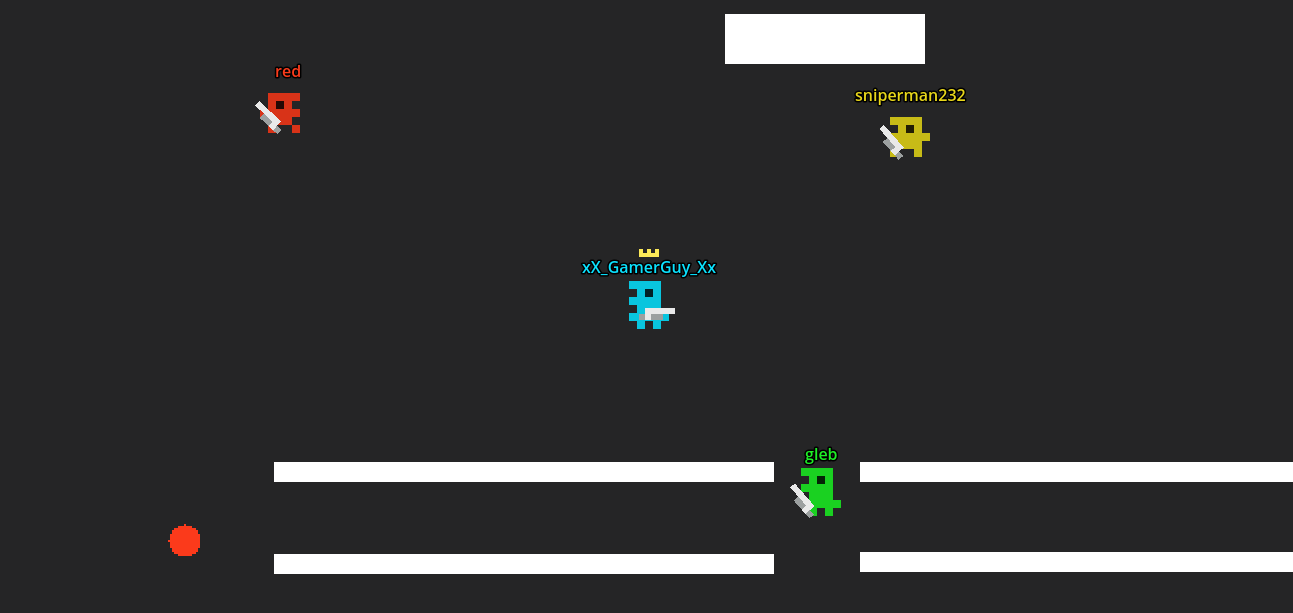Learning To Make Multiplayer Games In Godot
I’ve always heard that if you wanted to make a multiplayer game, you shouldn’t start with making a singleplayer game because nearly the entire codebase would need to be rewritten when you moved to multiplayer. This advice, paired with the fact that I already sucked at finishing smaller singleplayer projects, led me to never touch multiplayer.
I think this is fair advice for full-time game devs (or anyone on a strict time budget) but horrible advice for hobbyist.
So for no reason at all, let’s learn how to make a multiplayer game using examples in Godot!
Here’s the repo if you’re impatient :)
The Goal
For this test game, I wanted to make a simple chatroom where you could move your character around and type horrible messages that would appear above your head for a short time before disappearing.
Basically I’m ripping off Club Penguin.
After that, I also added a paintball gun that could be used to shoot other players or paint patterns over the map, allowing for group drawing sessions (which definitely wouldn’t be abused).
The Basics
Godot has some excellent resources for learning multiplayer that I’ll link at the bottom of this page, but I’ll briefly touch on the 3 main components that handle multiplayer:
- MultiplayerSpawner: This node can be added to a scene to synchronize when scenes are instantiated, so that all peers have the same nodes
- MultiplayerSynchronizer: This node can be added to any scene to synchronize specific public properties (using the
@exportannotation) of the attached scene - @rpc annotation: This can be added above any function to allow it to be called as a Remote Procedure Call.
RPC functions can be called:
- Just on the server by checking
multiplayer.is_server()in the function - On all peers including the caller using the
"call_local"option - On a specific peer using
rpc_id(<some-peer-id>)instead of just.rpc() - On all peers except the caller, which is the default behavior
The Secret Sauce
Here’s the biggest points I learned:
- The
multiplayer_authorityon a node needs to match on all peers and is not automatically synchronized - The “Spawn” sync option for
MultiplayerSynchronizeris applied when the scene is added to the tree, usually withadd_child()(so you can set props after instantiation) - When creating scenes with the
MultiplayerSpawner, ensure you use the force_readable_name option when adding to the tree by callingadd_child(<your-node>, true). This avoids errors when calling on other peers - RPCs don’t automatically serialize complex data structures. This is annoying since
MultiplayerSynchronizerdoes this for you
99% of the time, clients should just make RPC calls to the server to instantiate/update scenes that are controlled by MultiplayerSpawners/MultiplayerSynchronizer. This ensures they automatically get reflected to other peers. The 1% scenario is if you truly want your peers to have authority over specific scenes. This can be viable, but opens the door to cheating
Good Resources
- Godot Docs: High-level multiplayer
- Godot Blog: Scene Replication - don’t follow too closely for examples, but gives good overview of
MultiplayerSpawner,MultiplayerSynchronizer, and the@rpcannotation - Godot Example Projects (GitHub) - specifically the
networking/multiplayer_bomberproject - clumsy - great Windows tool for faking network latency, packet loss, etc
